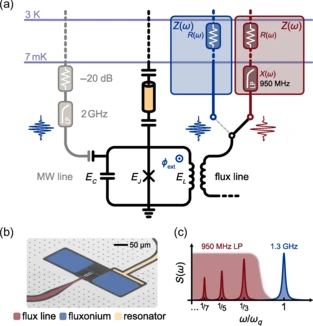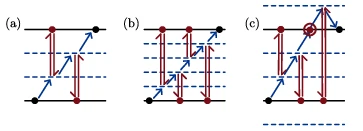Sub-harmonic driving via multiphoton processes in cQED

Conventional quantum control techniques rely on resonant driving-that is, injecting energy through a pump signal at exactly the frequency of a quantum transition. In collaboration with experimentalists at the Walther-Meissner Institute, our team explores a novel alternative: sub-harmonic driving, where the system is driven at a fraction of its natural frequency. Since the control line is not resonant with the qubit, the latter cannot decay into it, improving its lifetime.
Using a perturbative and Floquet-theory framework, we developed a general theoretical model describing how weak sub-harmonic drives mediate transitions through multi-photon processes. Our work explains how virtual “Floquet states” facilitate population transfer and predicts effective Hamiltonians governing the system’s long-term dynamics.
Fluxonium qubits are especially suited for sub-harmonic driving due to their large anharmonicity and protection against noise. This property enhances Rabi rates and allows efficient gate operations at reduced driving frequencies. Our theory also quantifies how Stark shifts and higher-order corrections emerge at strong drives-insights confirmed by recent numerical simulations and experiments at WMI.
People: Sichen Xu, Jacquelin Luneau
Related publications:
Theory of Multi-photon Processes for Applications in Quantum Control, L.Huang et al., arXiv:2509.16074 (2025)
